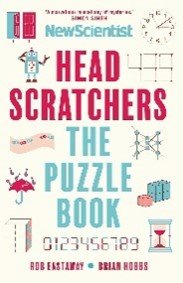Rob Eastaway: Maths, Puzzles and Artificial Intelligence
Do you remember the days when you were given, say, twenty maths problems to work on for homework, to practise percentages or algebra?
Those days might be coming to an end, because when it comes to homework, Artificial Intelligence and particularly ChatGPT seems to have got it covered.
Want to know the roots of a quadratic equation? ChatGPT can find them in the blink of an eye. Need a list of all the prime numbers from 1 to 100? ChatGPT will deliver them almost instantly, and while you’re at it, can also produce Python code that will generate prime numbers up to any number you wish.
All of which begs the question: what’s the point of doing maths if ChatGPT can now do it all for you? It’s a challenge that is confronting maths teachers across the country. And the answer is not about whether people need to continue to do maths. It is deciding WHICH maths will be important in the future.
My view is that the future of maths is about learning how to solve problems creatively. ChatGPT is great at solving routine maths questions. Just like calculators, it can do all the hard graft. But where it is weak is in dealing with unfamiliar ideas.
I asked ChatGPT a simple puzzle: “What is the smallest whole number score that you can’t get with a single dart on a regular dartboard?” I reminded it that a dartboard is numbered 1 to 20, with a bullseye and rings of doubles and trebles. You might want to have a think about the answer before reading on. The answer isn’t zero, because you can score zero just by missing the board, as I have done many times.
In an instant ChatGPT reeled off a description of how to solve the problem and then with supreme confidence, it gave me an answer.
“5”.
“I think you’ve misunderstood the question,” I told it. “I can score 5 just by throwing a dart into 5”.
“I apologise for my confusion,” responded ChatGPT in grovelling deference, reminding me a bit of Dobby in Harry Potter. It had another go. “Numbers can be generated with singles, doubles and trebles. So the smallest number you cannot get is….3”.
What?! I calmly explained the problem again, and how any number from 1 to 20 was possible. Finally, with a lot of hand-holding it came to the correct answer: 23.*
I’ve tried numerous other puzzles on it since then, and time and again, as soon as the context is unfamiliar, or there is a surprising twist, ChatGPT seems to make crass mistakes – but it does so with huge confidence, until you challenge it.
To me, this sums up why it’s still important to learn maths. Artificial Intelligence comes across as very clever and very confident, but when challenged, it turns out that it is often wrong. It also has a particular view of the world that is based on the biases of the people who programmed it and of the information that is on the internet.
What humans will need in future is the confidence and competence to be able to challenge AI, rather than blindly trusting everything that it tells us. It’s similar to how we still need strong numeracy to be able to challenge a calculator, because we all know that calculators can give the wrong answer, courtesy of ‘fat fingers’ when entering the numbers.
The more I’ve looked at ChatGPT, the more I’ve realised where humans still have the upper hand. Each of us has the benefit of having our own unique experience of life with all its inconsistencies and bizarre connections, and we tap into that when we solve problems. We have the ability to think laterally. And we have a sense of humour, which ChatGPT definitely doesn’t have.
So what kind of maths should we be encouraging children to be doing?
My answer is puzzles, especially those with surprising answers. Good puzzles can make us go Ah!, Aha! or Haha!, and that’s what gives us the greatest insight into maths, and often reveals the joy of the subject at the same time.
What’s 9376 squared? Who cares? – my calculator can tell me that. But tell me what is interesting about 9376 squared?** Now you’re talking!
Rob Eastaway is Director of www.mathsinspiration.com, and recently compiled Headscratchers, a collection of puzzles from New Scientist magazine. https://www.amazon.co.uk/Headscratchers-New-Scientist-Puzzle-Book/dp/1838958770/ref=cm_cr_arp_d_bdcrb_top?ie=UTF8
* If you try this yourself, ChatGPT will probably give you the answer 23 – it now seems to have found the answer online.
**9376 when squared ends in itself. It’s the only four digit number with this property. There are infinitely many such numbers, but the ones with two or more digits always end in either 5 or 6. Why?’


